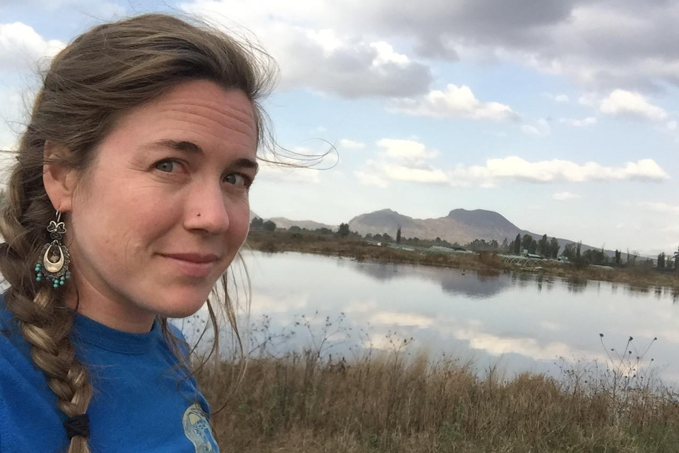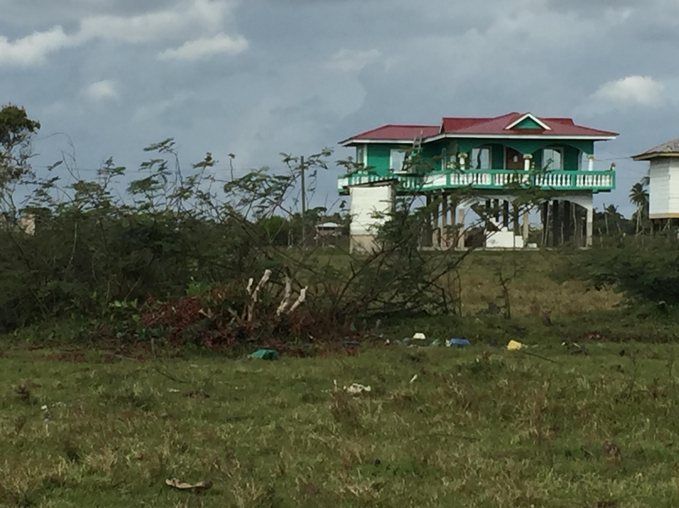
Solving an Interdisciplinary Problem Researchers have long understood that corruption and illicit activity play a role in global environmental and sustainability change, but due to its hidden and dangerous nature, quantifying the activities and incorporating them into land change analyses have largely been elusive—until now.
New research led by Elizabeth Tellman quantifies the phenomena and makes a case to the sustainability science and land change community for how the data can be incorporated into future land-use models. The paper, led by Tellman, an Arizona State University PhD Geography alumna and current Columbia University postdoc Elizabeth Tellman, also makes the case for why research in this field should be further explored.
In her paper, “Understanding the role of illicit transactions in land-change dynamics” published in Nature Sustainability, Tellman presents a conceptual framework of illicit land transactions and a two-pronged approach using remotely sensed data to spatially link illicit activities to land use.
“Understanding where, why, and how land use changes are essential to addressing global sustainability,” said Tellman. “Never has the vast impact of illicit activity on environmental land systems been quantified on a large scale.”
Taking on the Global Problem
From large deforestation in Costa Rica by narco drug traffickers to illegal sand mining by mafia groups in India to illicit transactions between urban developers and politicians in the United States, corrupt land transactions are pervasive across the globe.
According to one study, 40% of deforestation globally is estimated to be illegal, and that number rises to 80% in places such as Indonesia and Brazil.
“Land system science has long recognized that illegal and illicit activities are large in global land change but are lacking in our models and projections of that change,” B. L. Turner II, Regents Professor in the School of Geographical Sciences and Urban Planning and a co-author of the study said. “This perspective makes the case that it can be added and be detected, in some instances, via remote sensing. It is a call to arms to the land system science community to take the subject seriously and how it may be done.”
In her research, Tellman and her co-authors analyzed other prominent studies on land change and illicit activity and examined why and how illicit activity causes land change. They then explained why it hasn’t been quantified, identified the challenges in quantifying these activities, and identified new potential data sets and methods that exist that may enable other researchers to quantify it better—primarily through the use of satellite data and remote sensing.
Tellman and her team cite another study led by Nicholas Magliocca from the University of Alabama and co-authored by Tellman and others as an example of research that successfully uses a methodology to handle this specific kind of data and proves both the correlation and the causality of narco-trafficking and deforestation in Central America. This research was supported by the National Scoio-Environmental Synthesis Center.
“There’s been work done on narco-trafficking and deforestation, but there is so much illicit activity around urbanization and deforestation all around the world that needs to be better understood and quantified,” Tellman said. “The globe itself has really high rates of urbanization and there’s a lot of corruption, especially related to electoral politics. As scientists, we can sort out and understand not just what happened in one place with one case but how does that work as a phenomenon as a larger system.”

Solving an Interdisciplinary Problem
To fully understand the complete picture of how illicit activity influences environmental land change Tellman says the research community must come together across disciplinary barriers.
“If you want to understand corruption and deforestation, you need more than just a geographer studying deforestation. You need a political scientist who can explain how that system of corruption works or you may need an economist to look at different types of financial transactions,” Tellman said. “In the end, it’s not just about new data and new methods, but it’s also about breaking down disciplinary barriers that we think are required to tackle this challenge.”
Tellman hopes that from this research others will be inspired to continue exploring this important topic.
“I hope this will get people excited to tackle this challenge of quantifying the role of illicit activity to environmental change in a way that they weren’t able to do so before,” Tellman continued. “I want to inspire other scientists and to show them this is possible and encourage them to do so.”
This article was adapted from a news story published by Arizona State University, available here: https://sgsup.asu.edu/research-reveals-corrupt-and-illicit-activity-impact-land-change